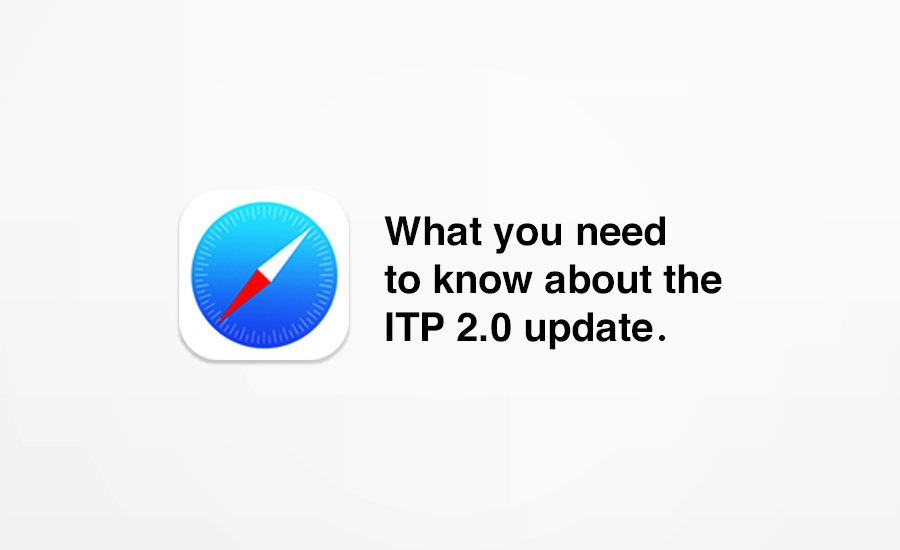Data privacy on the internet continues to be front and center with rapid policy changes taking place. The most recent change came in mid-September with an update to Apple’s Intelligent Tracking Prevention feature, or ITP 2.0.
If you’ve been keeping up with ITP 2.0, you know that Apple is moving to prevent applications from tracking users with third-party cookies as they browse the web on Safari.
Naturally, this has advertisers uneasy about user data and tracking capabilities, but we’ll assure you in this article that there are ways to continue tracking users effectively without the interference of Apple’s ITP 2.0.
What is Intelligent Tracking Prevention 2.0?
In September 2017, Apple took a stand on data privacy by releasing ITP 1.0 with iOS 11, which blocked or limited access to third-party cookies after 24 hours on Safari used for measurement and personalization across advertising.
However, Apple’s ITP 2.0 in iOS12 completely eliminates that 24-hour window, blocking or heavily limiting third-party cookies and tracking capabilities online for users browsing on Safari.
What does ITP 2.0 mean for advertisers?
From a digital marketing and analytics perspective, any technologies you’re using on your website that require third-party cookies (i.e advertising pixels or tags) will stop tracking on Safari browsers (mobile or desktop).
That means, for example, if you are using legacy Google Ads Conversion Tracking (GACT) or legacy DV360/CM Floodlights, you won’t be able to track any conversions on Safari.
Previously, ITP 1.0 had allowed tracking of click-through and view-through conversions if they happened within 24 hours but that is no longer the case with the complete elimination of third-party data tracking on Safari.
As for YouTube advertisers, you can expect remarketing lists to get smaller as most Safari users are unable to be added. You may also experience a drop in Similar Audience lists.
Customer Match and Google Audience (in-market, affinity, and detailed demographics) will remain unaffected.
What should advertisers do about ITP 2.0?
Not all hope is lost. There are solutions to the third-party tracking blocked on Safari browsers.
Technologies like Facebook and Google have already developed solutions utilizing first-party tracking capabilities, so Google Analytics and Facebook aren’t affected.
To avoid the impacts of ITP 2.0, make sure you’re using best practices for first-party cookie tracking across websites.
Google recommends one of three sitewide tags to adapt to this change:
Google Tag Manager Conversion Linker
Deploy Conversion Linker tags on all of your landing pages to store click data in first-party cookies.
Google Ads linked to Google Analytics
If your Google Ads are linked to Google Analytics to track your conversions, then you likely won’t need to do anything as Google Analytics is already set up using first-party cookies.
Hard-Coding or Non-GTM Applications
If you are hard-coding your site, you’ll need to implement a global tracking tag (gtag.js) in the head section on all pages of your site. For Non-GTM applications, replace your current Google Ads remarketing tag with the (gtag.js) tag.
Even with one of the tags used in place of DV360, view-through conversions will not be measurable on Safari.
Define a clear budget for iOS devices
In addition to utilizing first-party cookies, consider a distinct budget for iOS devices.
Some marketers are carving out budgets for iOS and Safari activity while ITP 2.0 metrics are being evaluated. The immediate numbers marketers are recognizing have higher costs associated with iOS devices compared to Android or non-iOS, so it’s essential to have a budget outlined to reach valuable users on Apple.
Looking ahead at data privacy updates
Our advice at Strike is to be mindful of the industry and prepare your marketing and data teams for these policy changes. Mozilla Firefox has also announced they’re exploring ways to prevent third-party cookie tracking, so it’s essential to be watchful of these updates and prepare accordingly.
That means making sure you’ve implemented sitewide tagging and are using a tag management system like Google Tag Manager.
The data privacy climate will only continue to evolve and the best thing you can do is be alert and prepare so that you’re ready to tackle these changes head-on when they arise.
Let us know if you have questions or need assistance ensuring your Google Tag Manager is modified for Apple’s update.








